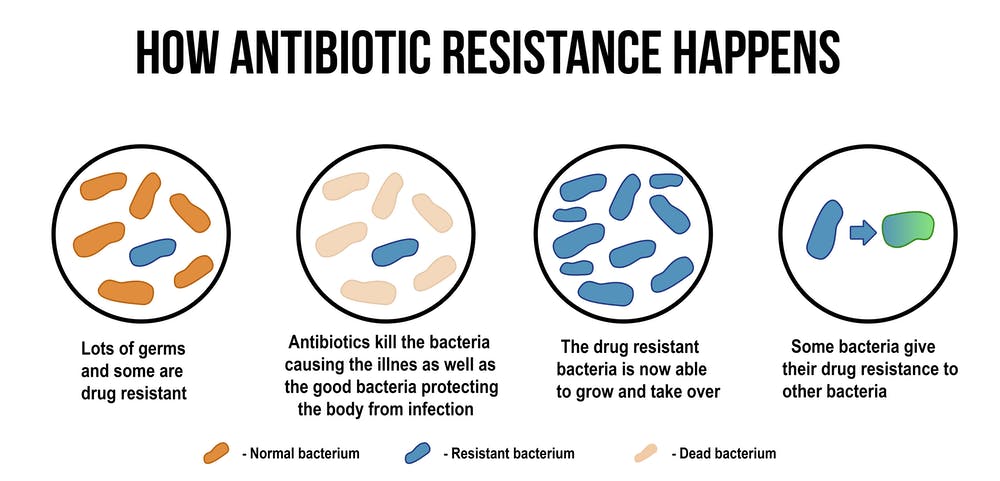Third Golden Age of Microbiology
Introduction
- Today, microbiology again finds itself on the world stage, in part from the new age of exploration in which unique and diverse microbes are being discovered in abundance around the world.
- In addition, biotechnology has made use of the natural and genetically engineered abilities of microbial agents to carry out biological processes for industrial/commercial/medical applications.
- In the latest Golden Age, microbiology again is making important contributions to the life sciences and humanity.
- However, the third Golden Age of microbiology also faces several challenges, many of which still concern infectious diseases that today are responsible for 16% of all deaths globally.

Challenges Faced by Microbiology
- The resurgence of infectious disease has brought the subject back into the mainstream of epidemiology.
- Even in the United States, more than 100,000 people die each year from bacterial infections, making them the fourth leading cause of death.
- In fact, on a global scale, infectious diseases are spreading geographically faster than at any time in history.
Some of these challenges are discussed briefly:
Disease Transmission
- Experts estimate that more than 3 billion people (9 million per day) on some 24 million flights traveled by air in 2015, making an outbreak or an epidemic in one part of the world only a few flight hours away from becoming a potentially dangerous threat in another region of the globe.
- It is a sobering thought to realize that since 2002, the WHO has verified more than 1,100 epidemic events worldwide.
- Unlike past generations, today’s extremly mobile, mutualist, and interconnected world supplies more chances for the rapid spread of infectious diseases.
Emerging and Reemerging Infectious Diseases
- Infectious diseases today not only have the potential to spread faster, they also are appearing with greater frequency and intensity.
- Over the past few decades, new diseases have been identified at the unprecedented rate of one or more per year, such that today there are nearly 40 infectious diseases present that were unknown a generation ago.
These diseases fall into one of two groups:
- Emerging infectious disease
- Reemerging infectious disease
Emerging infectious disease
- An emerging infectious disease is one that has recently surfaced in the human population for the first time.
- Among the more newsworthy have been AIDS, severe acute respiratory syndrome (SARS), Lyme disease, bird flu, and most recently, Ebola virus disease in West Africa and Zika virus infection in the Western Hemisphere.
- There is no cure for any of these, and, undoubtedly, there are more disease causing pathogens ready to emerge.
Reemerging infectious disease
- A reemerging infectious disease is one that has existed in the past but is now showing resurgence in resistant forms and expansion in geographic range.
- Among the more prominent reemerging diseases are drug-resistant tuberculosis, cholera, dengue fever, and, for the first time in the Western Hemisphere, West Nile virus disease.

- Therefore, until better surveillance of disease outbreaks is established, and more and better vaccines and antimicrobial drugs are developed, emerging and reemerging diseases will remain a challenge to public health and microbiology.
Spreading of Disease
- Epidemiologists and health experts estimate that about 60% of infectious diseases in humans are zoonotic diseases, that is, diseases that are spread from wild or domesticated animals to humans.
- Examples include AIDS, Ebola virus disease, Zika virus infection, and influenza.
- Other factors including habitat destruction, increased contact between humans and wild animals, climate change, and the trade in global agricultural products further drive disease transmission.
- Therefore, scientists in human, veterinary (domestic and wild), and environmental health are establishing a worldwide collaboration and communication network called One Health.
- Rather than treat each infectious disease in isolation, the strategy of One Health is to monitor and combine all information on human, animal, and environmental health in such a way that a potential outbreak of disease can be predicted before it actually happens.
- This challenge is daunting but doable. The success of one health is critical to the control of infectious diseases and is indispensable for helping maintain human health.
Increased Antibiotic Resistance in pathogen

- Additional challenge involves our growing inability to fight infectious disease because so many pathogens are now resistant to one or more antibiotics, and such antibiotic resistance is developing faster than new antibiotics are being discovered.
- It was recognized that pathogens could develop into superbugs, which are microbes that are resistant to multiple antibiotics, a crusade has been waged to restrain the improper use of these drugs by doctors and to teach patients not to demand antibiotics in uncalled-for situations.
- The challenge facing microbiologists and the medical community is to find new and effective antibiotics to which pathogens will not develop resistance quickly before the current arsenal is useless.
- Unfortunately, the growing threat of antibiotic resistance has been accompanied by a decline in new drug discovery and an increase in the time to develop a drug from discovery to market.
- Consequently, antibiotic resistance has become a major health threat and one of the most important challenges facing microbiology today.
Bioterrorism
- The intentional or threatened use of biological agents to cause fear in or actually inflict death or disease upon a large population is referred to as bioterrorism.
- Most of the recognized biological agents for bioterrorism are microorganisms, viruses, or microbial toxins that are bringing diseases like anthrax, smallpox, and plague back into the human psyche.

- To minimize the use of these agents to inflict mass casualties, the challenge to the scientific community and microbiologists is to improve the ways that bioterror agents are detected, discover effective measures to protect the public, and develop new and effective treatments against these pathogens for individuals or whole populations.
Climate Change and Infectious Disease
- A very controversial issue is how climate change (including warming temperatures and altering rainfall patterns) could affect the frequency and distribution of infectious diseases around the world in the coming decades.
- For example, as temperatures rise in various regions of the world, mosquitoes might broaden their range and, in so doing, spread diseases like malaria and dengue fever to more temperate climates, including North America and Europe.
- Warming ocean waters also could provide ideal environments for the spread of waterborne diseases like cholera.
- Microbiologists, epidemiologists, climate scientists, and many others are studying new strategies to limit potential disease spread before the causative agents have an opportunity to be established.
- In so doing, researchers need to understand better the dynamics of climate change and recognize how such changes might affect the behaviors of potentially emerging and reemerging diseases that could affect the health of humans, livestock, plants, and wildlife.
- Climate change coupled with the ubiquity and speed of air travel and the expanding evolution of antibiotic resistance could work synergistically to cause major epidemics, or even pandemics, if microbiologists and health authorities don’t find ways to constantly survey the microbial landscape and to decrease the burden of infectious disease.
Microbial Ecology and Evolution Also Are Helping to Drive the New Golden Age
- Since the time of the first Golden Age of microbiology, microbiologists have wanted to understand how a microbe interacts, survives, and thrives in the environment.
- Today, microbiology is less worried with a particular microbe and more concerned with the relationships among microorganisms and with their environment.
Microbial Ecology
- Microbial ecology, which was started by Winogradsky and Beijerinck, involves the study of microbial dynamics in the environment and their interactions with each other and with other organisms.
- Traditional methods of microbial ecology required organisms from an environment be isolated and cultivated in the laboratory so that they can be characterized and identified.
- Unfortunately, up to 98% of microorganisms do not grow in a laboratory culture and, therefore, they cannot be studied visually.
- In spite of this, today many microbiologists, armed with genetic, molecular, and biotechnology tools, can study and characterize these uncultured microbes.
- Today researchers are discovering that most microbes do not act as individual entities; rather, in nature they survive in complex communities called biofilms.
- For example, the whitish, gooey plaque on your teeth is an example of a bacterial biofilm.

- Microbes in biofilms act very differently than individual cells, and the biofilms can be difficult to treat when they cause chronic infectious disease.
Microbial Evolution
- It was Charles Darwin—another of the scientists who combined observation with a “prepared mind”—who in 1859 first outlined the principles of evolution.
- Today, evolutionary theory is the unifying force in modern biology, tying together such distinct fields as genetics, ecology, medicine, and microbiology.
- Microbial evolution was occurring for some 2 billion years before the first truly eukaryotic cells appeared on the planet.
- Although challenging to study, it is possible today to “replay history” by following the accumulation of unpredictable, chance events that lead to evolutionary novelty, which is a hallmark of the microbes.
- In addition, microbial evolution studies are putting together new approaches to improve agricultural productivity, to monitor and assess climate change, and even to produce clean fuels and energy.
- The new field of evolutionary medicine is providing new strategies to slow the evolution of antibiotic resistance, to treat infectious diseases, and to better understand the role of microbes in human health.
- One has to wonder what Darwin would make of the microbial world if he were alive today.
Conclusion
- In conclusion, microbiology (from then until now) has gone from observing the first microbes as curiosities (Leeuwenhoek) to identifying and studying individual microorganisms as pathogens (Pasteur, Koch, and others) to appreciating microbiomes as the engines that support all life on Earth (today).
- Yet, over this span of 300-plus years, microbiologists have only discovered perhaps 2% of all microbial species.
- Microbiology from then until now has come a long way but has a much longer way yet to go and many challenges to face.
Reference and Sources
- https://www.researchgate.net/publication/291274422_Impact_of_Climate_Change_on_the_Outbreak_of_Infectious_Diseases
- https://www.coursehero.com/file/p74gno1/So-unlike-past-generations-todays-highly-mobile-interdependent-andinter/
- https://www.ncbi.nlm.nih.gov/books/n/nap11950/ch3/
- https://www.jstor.org/stable/4451405
- https://www.nap.edu/read/18677/chapter/3
- https://quizlet.com/116819463/microbiology-chapter-one-vocab-flash-cards/
- https://dokumen.pub/karps-cell-and-molecular-biology-concepts-and-experiments-8nbsped-978111888644.html
- https://www.biologydiscussion.com/essay/microbiology/essay-on-microbiology-top-6-essays/17789
- https://prepareforchange.net/2021/01/03/cures-for-covid-19-confirmed-by-medical-experts/
- https://www.researchgate.net/publication/329247527_Travel_Migration_and_Emerging_Infectious_Diseases
- https://issuu.com/ivy-group/docs/ivy_rights_catalogue_fbf_2014_issuu
- https://www.scholarsresearchlibrary.com/articles/the-impact-of-climatic-change-on-animal-disease-ecologydistribution-and-emergence-a-review-14897.html
- https://www.cbd.int/health/doc/qa-infectiousDiseases-who.pdf
Also Read:
- Microbial Fuel Cells
- Polymerase Chain Reaction
- DNA replication in prokaryotes
- What is Gene Expression?
- Different types of Pathways for ATP Production
- Probiotics: Introduction, Development and Uses in agriculture
- Exposure and Transmission of Infectious Disease
- Roles of Viruses In Aquatic Ecosystems
- Mutations: Introduction, Types, Causes and Repair Mechanisms
- Microbiology Disciplines: Bacteria, Viruses, Fungi, Archaea and Protists
- Bacterial Growth Curve: Definition, Phases and Measurement
- Cyanobacteria: occurrence, morphology, structure, reproduction
- Milk: Composition, Processing, Pasteurization, Pathogens and Spoilage

Microbiologist